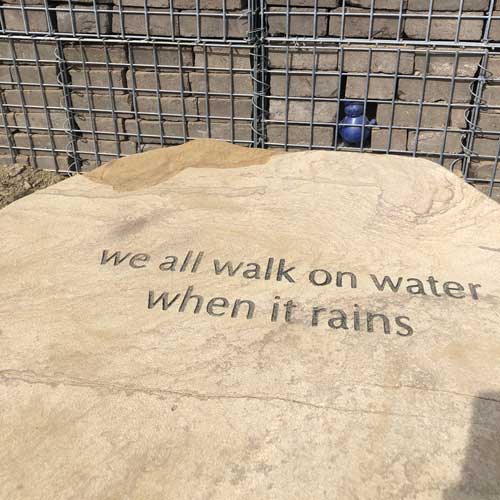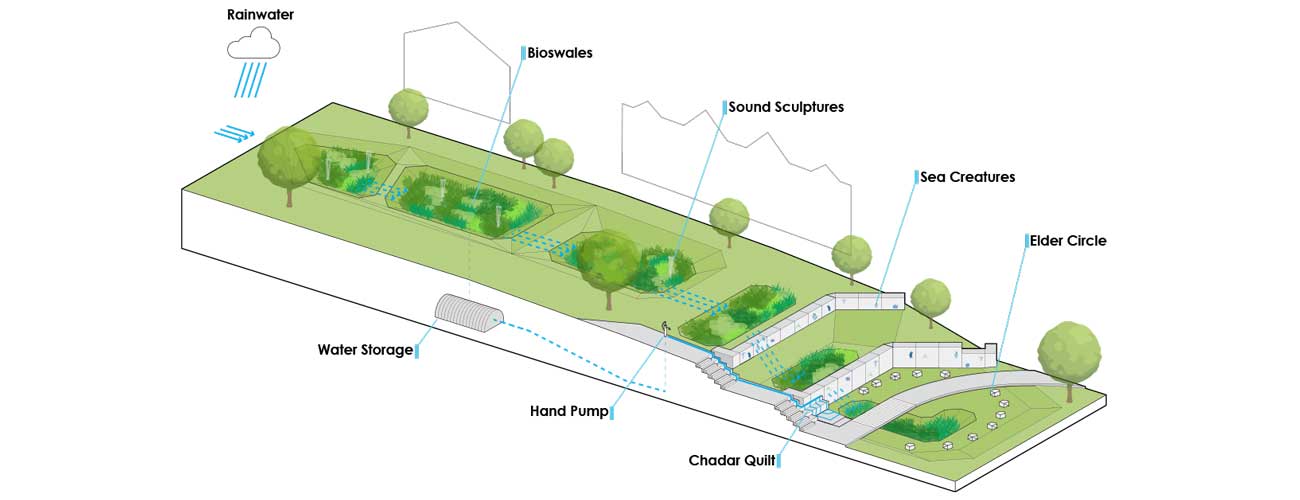River Roots: The Well
The Pittsburgh community of Larimer has been cultivating a local culture of sustainability through ecodistrict planning and has used art and creative placemaking to build capacity around neighborhood stormwater issues, urban agriculture and economic development. River Roots is an art project led by the Larimer community in collaboration with evolveEA, artist Alisha B. Wormsley, a team of stormwater experts, the Kingsley Association, and the Urban Redevelopment Authority. The collaboration is supported by a grant from ArtPlace America and grew out of a previous community engagement, Living Waters of Larimer (LWOL), in which evolveEA collaborated with the Kingsley Association, members of the Larimer Green Team, artists and stormwater experts.
The Well is situated in Larimer Park, where Little Negley Run is being constructed in order to restore part of the Negley Run stream that used to flow along Larimer’s border with neighboring Highland Park. The stream was paved over during the first half of the 20th century, leading to periodic flooding in the neighborhood and contributing to pollution of the Allegheny River below.
The new park will provide an interactive and playful community gathering space as well as innovative stewardship of storm water.
As longtime partners with Larimer’s community institutions, evolveEA has supported the community engagement and conceptual development of the project. Our team is providing landscape design services, project management, and assisting with stormwater performance analysis throughout all phases of the project while coordinating with funders and regional stakeholders.
The Well: River Roots is intended to be a gathering place to celebrate shared experiences. Water is captured from the site and falls gently through the site in bioswales and through art structures. As the water collects, it activates different parts of the site. On the upper site, surface runoff is collected and visibly celebrated through art. The upper area gives voice to the stories that people know and understand. On the lower site, water seeps from sources unseen. Visitors can see and hear stories that are less visible. The art installations will draw from the community’s associations with water as they pertain to sensory experiences.



